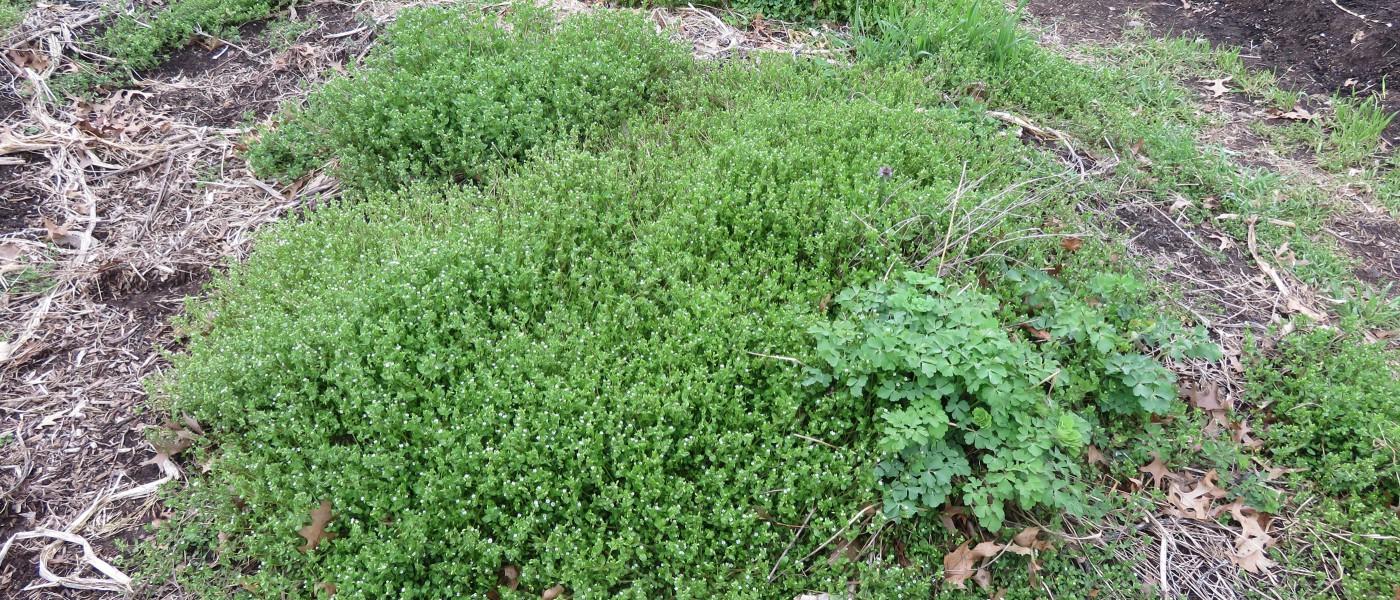Weed of the Month: Chickweed
Gardeners know it’s time to start preparing for spring planting when they see that chickweed has arrived! One of the first spring weeds, the bright green annual is a refreshing sight for my plant-starved eyes, especially after this year’s long winter. Growing in lush dense mats, cold-hardy chickweed (Stellaria media) prefers moist, cultivated soils and often inadvertently acts as a cover crop on garden beds, holding the soil together through the late winter and early spring. The genus name Stellaria comes from the Latin for “star” and refers to the tiny white, star-shaped flowers, which partially close in the evening and on cloudy days. At night, chickweed’s leaves, round with pointed tips, fold protectively over the new shoots and buds in an uncommon phenomenon known as "the sleep of plants."
Chickweed originally hails from Europe and is now one of the most common weeds on the planet. And no wonder: A single plant can produce 2,500 to 15,000 seeds; the seeds remain viable for over a decade;, and several generations of the plant can emerge in a year. Another confounding feature: Chickweed bears both flowers and mature seeds simultaneously. So you might think you’re pulling out a blooming plant in time to prevent seeding, but alas, those seeds have long set. Unwitting weeders who toss chickweed in their compost piles may actually be assisting in the plant’s spread. Chickens and other birds also help. They love to eat chickweed seeds and greens—hence the common name—further aiding in its dispersal.
You may spot some errant chickweed in store-bought salad mixes. Fear not, the entire plant is edible! In fact, you can add it to salads or sandwiches—a nice way to get fresh greens when most cultivated ones are still out of season. The overall flavor is fresh and springlike. In the Children’s Garden, we often make pesto using chickweed in place of basil. Since chickweed is shallow-rooted, I’d suggest you yank out the whole plant and snip off the roots. Then wash it carefully to remove soil and other residue. If you miss your chance to taste chickweed this spring, don’t worry—it’ll be back in the fall once the weather cools and other plants die back and leave more open space.


